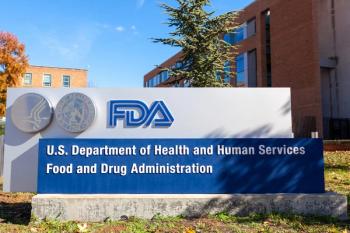
Optometrists-help limit negative effects of aging on your patients
Primary care optometrists can take the lead in helping their older patients manage age-related health issues directly and indirectly associated with the eyes and vision.
"As optometrists, we have to know that we can change the structure of the retina. We can increase macular pigment in most patients and improve visual acuity, contrast sensitivity, glare recovery, and in some patients, even diminish scotomas and metamorphopsias. We can perfect vision by prescribing carotenoids and omega-3 fatty acids, which work synergistically. A better functioning retina is probably a healthier retina, and this is particularly important for safe nighttime driving," said Dr. Richer, director of Ocular Preventive Medicine at Captain James A. Lovell Federal Health Care Center, and associate professor of Family and Preventive Medicine at Rosalind Franklin University of Medicine and Science, both located in North Chicago, IL.
Patients may not get information from other practitioners about elders and nutrition, exercise, and changes in drug absorption, distribution, metabolism, and elimination. This is a great opportunity for optometrists to provide this service, he continued, suggesting that doctors discuss these topics, recommend nutritional interventions, and suggest books and Web sites as well as provide handouts about a healthy diet and lifestyle.
Nutritional excesses, shortages
The food supply and modern nutrition in the United States contribute to or increase the risk of many health problems, including obesity, diabetes, increased inflammation, cancer, cardiovascular disease, hypertension, age-related macular degeneration, cataract, and retinopathy, according to Dr. Richer.
"The industrial food complex breeds fat Americans," he said. "This isn't solely about willpower, it's about our environment, educated food selection, and the interplay of issues, such as unnecessary trans fats, high fructose corn syrup, and iron fortification in patients over the age of 50. We consciously have to teach patients to increase plant food and essential fats in their diet while limiting the intake of highly processed foods."
"Are you spending time talking to people about what to put in their diet? It's not the lettuce in the middle of a hamburger," he said, noting that although the government recommends 9 to 13 servings of fruit and vegetables a day, 74% of Americans consume an average of only 3 servings daily.
Aging is a complex process, but free radicals are a significant component in the increased systemic inflammation that accompanies aging. Antioxidants combat free radicals to maintain healthy cells and prevent DNA damage, which may be directly proportional to how long you will live, according to Dr. Richer.
Fruits and vegetables are major sources of antioxidants, minerals, and fiber, but many people will also need to take a high-quality multivitamin or add an ocular vitamin with essential fats to their nutritional routine, such as B + L Ocuvite Adult 50+ for prevention, or PreserVision Eye Vitamin with Lutein and fish oil for high-risk AMD retinopathy.
Comprehensive multivitamins with ocular nutrients may be simpler for some patients. Five examples include Purity Products Perfect Multi Super Greens, NSI Basic Synergy #3 capsules, Life Extension Two-Per-Day tablets, MedOp MaxiVision Whole Body, or Biosyntrx Macula Complete, each at 50% dose.
Newsletter
Want more insights like this? Subscribe to Optometry Times and get clinical pearls and practice tips delivered straight to your inbox.













































.png)


